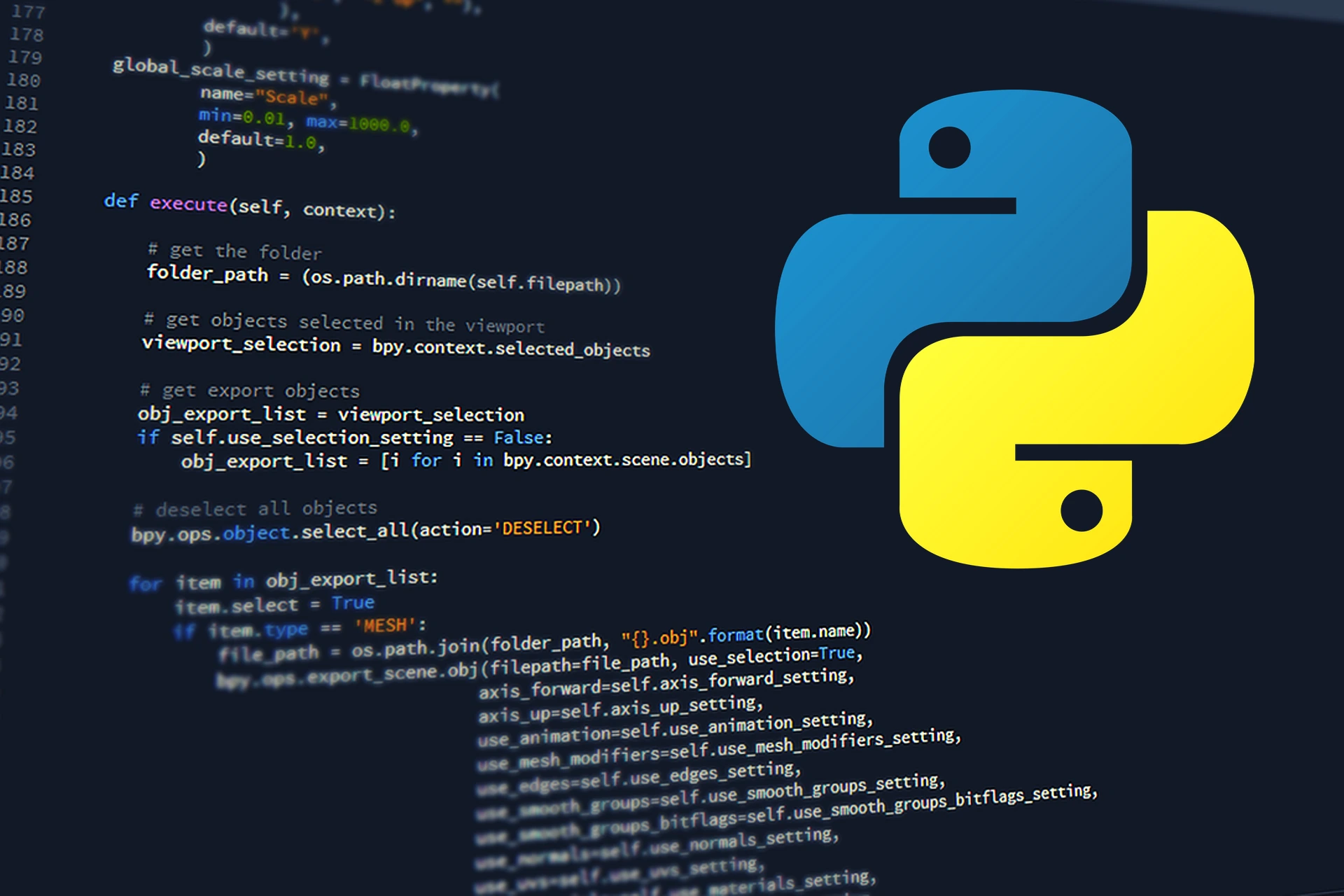How To Obfuscate Python Code
What is Python?
Python is a high-level, versatile programming language known for its simplicity, readability, and ease of use. Guido van Rossum created Python in the late 1980s, and it has since evolved into one of the most popular programming languages globally. Python's syntax emphasizes code readability, with a clear and expressive structure that enables developers to write and maintain code more efficiently. Its design philosophy, often summarized as "The Zen of Python," encourages a clean and concise coding style, fostering collaboration and readability among developers.
One of the significant benefits of Python lies in its versatility and broad applicability. Python is a general-purpose language used in various domains, including web development, data science, artificial intelligence, machine learning, automation, scientific computing, and more. Its extensive standard library provides modules and packages that simplify complex tasks, allowing developers to leverage existing functionalities and focus on solving specific problems. The language's adaptability and wide-ranging applications make it a preferred choice for both beginners and experienced developers across diverse industries.
Python's strong community support is another key advantage. The Python community is vibrant, active, and inclusive. This collaborative environment fosters the sharing of knowledge, code, and resources through platforms like GitHub and forums such as Stack Overflow. The availability of numerous third-party libraries and frameworks further enhances Python's capabilities, enabling developers to build robust and feature-rich applications with reduced development time. Popular frameworks like Django for web development, Flask for microservices, and NumPy and Pandas for data manipulation contribute to Python's reputation as a go-to language for a wide array of projects.
Additionally, Python's emphasis on code readability and simplicity contributes to its suitability for educational purposes. Many educational institutions and coding bootcamps use Python as a first programming language for beginners due to its easy-to-understand syntax and gentle learning curve. This accessibility makes Python an excellent choice for those entering the programming world, facilitating a smooth transition into more complex programming concepts.

What is Python Obfuscation?
Python obfuscation plays a pivotal role in the realm of software development, offering developers a powerful tool to fortify the protection of their intellectual property and proprietary algorithms. This technique involves implementing various transformations on Python code, including renaming variables and functions to obscure names, restructuring code, inserting irrelevant snippets, and leveraging advanced encoding methods. The positive aspect of Python obfuscation lies in its capacity to elevate the complexity of the code, effectively deterring casual attempts at reverse engineering and preserving the unique design and logic of the software.
One key advantage of Python obfuscation is its role as an additional layer of defense in safeguarding software. While it doesn't guarantee absolute security, it significantly raises the bar for unauthorized users seeking to understand the intricacies of the code. Developers, recognizing the importance of protecting their creations, often adopt Python obfuscation as a proactive measure. This approach empowers them to confidently share their software without compromising the security of their algorithms, fostering a more robust and secure software development environment.
In practical terms, Python obfuscation is embraced as a valuable complement to broader security measures during code distribution. By obscuring the code's structure and logic, developers can mitigate the risk of unauthorized access and tampering. This not only ensures the integrity of the software but also bolsters the developer's ability to control and manage access to their intellectual property.
In conclusion, Python obfuscation emerges as a positive and strategic practice, contributing significantly to the overarching goal of securing and preserving the intellectual property of developers. It empowers developers to strike a balance between sharing their innovations and protecting their creations, fostering a more resilient and secure software landscape.

Why should you obfuscate Python code?
Python obfuscation stands out as a crucial asset in the arsenal of software developers, offering a plethora of advantages in securing and preserving their intellectual property. One primary advantage lies in the inherent complexity it injects into the codebase. By strategically renaming variables and functions to cryptic names, restructuring code flow, inserting irrelevant sections, and applying advanced encoding techniques, Python obfuscation transforms the source code into a formidable puzzle for potential reverse engineers. This complexity serves as a robust deterrent, raising the difficulty level for unauthorized access and making it significantly more challenging for adversaries to grasp the intricacies of the software.
Beyond mere complexity, another notable advantage of Python obfuscation is its role in thwarting code analysis tools. By scrambling the code's structure and introducing decoy elements, obfuscation hinders automated analysis processes that aim to understand or exploit vulnerabilities. This proactive measure not only safeguards against malicious intent but also buys developers precious time in addressing potential security concerns, as automated tools grapple with the obfuscated code.
An often-overlooked benefit of Python obfuscation lies in its ability to protect proprietary algorithms. In competitive industries, where the uniqueness of algorithms is a key differentiator, obfuscation becomes a strategic ally. By obscuring the logical flow and design patterns of the code, developers shield their innovative algorithms from easy replication. This becomes especially crucial in scenarios where distributing the software is essential but revealing the underlying algorithms could compromise a company's competitive edge.
Python obfuscation enhances other security measures in the larger context of secure code distribution, forming a multi-layered defensive strategy. In addition to acting as a deterrent, the obfuscated code aids in the detection of unwanted access attempts. As a useful component of the overall security posture, monitoring attempts to interpret or modify the obfuscated code enables developers to remain alert and react quickly to any risks. To put it simply, Python obfuscation is a complex and versatile solution that gives developers a strong way to protect their intellectual property, prevent unwanted access, and stay ahead of the competition in the ever-changing software development industry.
- Stop reverse engineering against code
- Protect against software cracking
- Obfuscate proprietary code
- Protecting intellectual property
- Protecting sensitive data in source code (API keys, cryptographic keys, and more)

What are the drawbacks of a Python obfuscator?
Although Python obfuscation provides a number of benefits in terms of code protection, it is important to recognize its disadvantages as well. The possible effect on the readability and maintainability of the code is one major disadvantage. Although renaming variables and functions to obscure names deters reverse engineering, it might confuse developers who must maintain or update the software. This is known as obfuscation. Because of the difficulty in deciphering the obfuscated code, developers may find that their development and debugging times rise as a result of this reduction in readability. Furthermore, navigating complex code structures makes it harder for team members to collaborate inside a development team.
Another issue of Python obfuscation is the limited usefulness as a solo security technique. Although it can discourage haphazard attempts at reverse engineering, diligent attackers with sophisticated tools and abilities may still be able to decipher the obfuscated code. Although obfuscation introduces complexity, it acts as a barrier rather than a guarantee. Developers should be careful not to overlook other crucial security procedures like encryption, access controls, and frequent security audits because relying just on obfuscation might lead to a false impression of security. Essentially, the disadvantages of Python obfuscation highlight the need for a thorough and multi-layered approach to secure software development, even while it can improve security.
- When file size is a concern. Some obfuscators may increase the size of the output file
- When performance is a concern. Some obfuscators may have performance overhead
- Creating or maintaining open source software
- Publishing to software platforms like Github, Replit, PyPi, etc.
- Difficult when used for code collaboration
- Difficult to use for debugging

How can Python code be obfuscated?
Python code can be obfuscated by using our free and online Python obfuscator, this is a tool which instantaneously obfuscates Python source code. This specific obfuscator uses an obfuscation algorithm which is applied to Python code 100s of times over, making it extremely challenging and tedious to try and break. As you can see, the obfuscated output is much different to the Python code input. In fact, changing just a single small detail in a large input will generate a completely different output due to the amount of obfuscation layers are applied to the code
